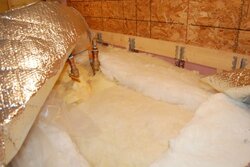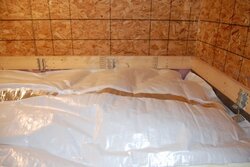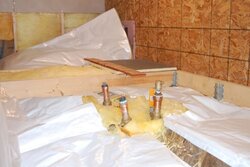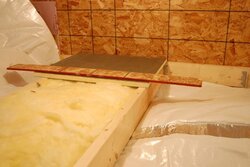Please give advice on the final layers over my tank.
I made a blanket with some pole barn insulation. It has a vapor barrier on it so I am trying to decide if I should cut it or not. It is on top of 12" fiberglass.
Here is the plan do I need a barrrier in here some where? Outside layer of OSB will be unheated space for several years. .
You can see the layers in the pictures
From the top down
1/2" OSB
1.2" foam board
R19 fiberglass
R6 Pole barn blanket with vapor barrier (not sealed around edges)
12" fiberglass minimum
Tank
gg
I made a blanket with some pole barn insulation. It has a vapor barrier on it so I am trying to decide if I should cut it or not. It is on top of 12" fiberglass.
Here is the plan do I need a barrrier in here some where? Outside layer of OSB will be unheated space for several years. .
You can see the layers in the pictures
From the top down
1/2" OSB
1.2" foam board
R19 fiberglass
R6 Pole barn blanket with vapor barrier (not sealed around edges)
12" fiberglass minimum
Tank
gg





